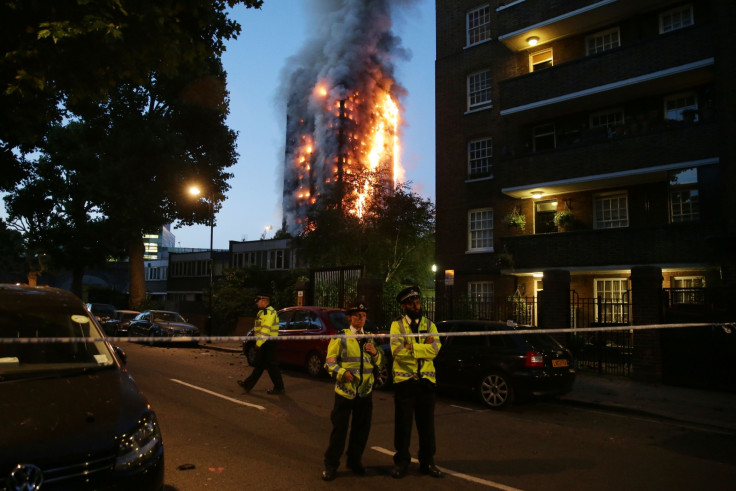Grenfell Tower fire: Fears poisonous cyanide released during inferno contributed to deaths
Experts say panels recently installed produce highly toxic hydrogen cyanide gas when they burn.
Toxic gasses release by insulation boards covering the Grenfell Tower, in West London, could have killed some residents when a devastating fire engulfed the building, according to reports.
At least 79 people have died since a huge blaze engulfed the building in Kensington on 14 June, with authorities expecting he death toll is expected to rise. At least 10 people are still in hospital, in critical condition.
Investigations into the causes of the fire and why it spread so quickly are ongoing. Among other possibilities, it has been speculated that flammable zinc panels recently bolted to the exterior of the building could has been a cause of its rapid spread.
Fire toxicity experts have now told Sky News the panels produce poisonous hydrogen cyanide gas when they burn and might have contributed to the deaths.
"The outside wall of the building had 150mm of PIR[Polyisocyanurate ] foam (fitted), and once the fire had spread to that every flat would have its own source of PIR foam, which would have produced enough hydrogen cyanide to kill all the people in that flat,"Richard Hull, professor of chemistry and fire science at the University of Central Lancashire, was quoted as saying.
King's College Hospital confirmed to the new site that three of the 12 patients it received after the fire had been treated with the hydrogen cyanide antidote Cyanokit.
The the Grenfell Tower building is managed by the Kensington and Chelsea Tenant Management Organisation.
What started the Grenfell Tower blaze? We summarise five possible causes.

Amid the political fallout from the devastating fire, Nicholas Holgate, the chief executive of Kensington and Chelsea council, has resigned following criticism for the way the disaster was handled.
Holgate said Sajid David, the Communities and Local Government Secretary, "required the leader of the council to seek my resignation," the Evening Standard reported on Thursday (22 June).
"Serving the families so desperately affected by the heart-breaking tragedy at Grenfell Tower remains the highest priority of the council," he said.
"Despite my wish to have continued, in very challenging circumstances, to lead on the executive responsibilities of the council, I have decided that it is better to step down from my role, once an appropriate successor has been appointed," Holgate continued.
"Success in our efforts requires leadership across London that sustains the confidence and support of central Government."
The resignation came shortly after Prime Minister Theresa May admitted the initial response to the disaster was a "failure of the state" and apologised to the victims.
May, who was heavily criticised for not visiting the victims of the blaze,aid the support on the ground for the families affected by the fire was "not good enough" on either a local or national level.
The government has pledged to give at least £5,500 to every household whose home had been destroyed by the fire, with one cash payment of £500 and the rest delivered through bank accounts or similar in a single payment.
Authorities also announced 68 luxury flats, with a starting price of £1.5m, will be used to rehouse those affected by the fire.
© Copyright IBTimes 2025. All rights reserved.






















